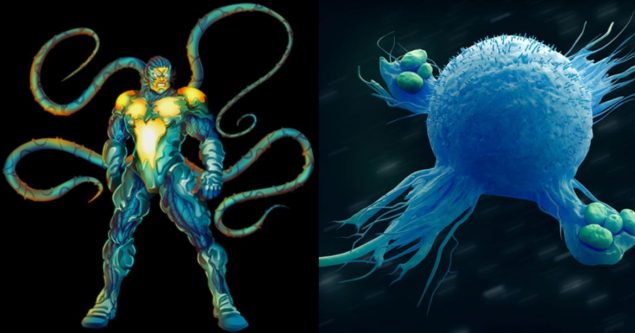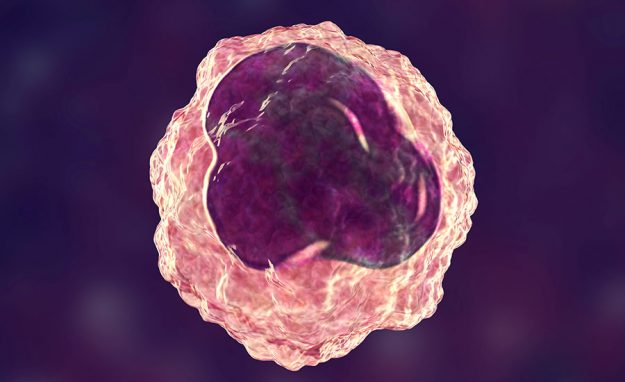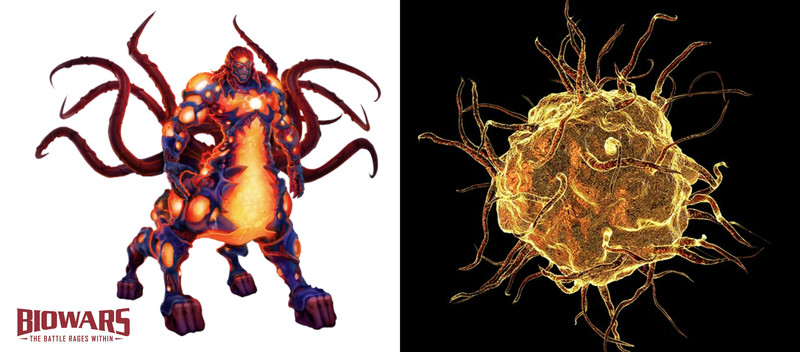Related Resources
Let’s see how Wolverine’s super-human traits would work in the real world.

Superpower #1: Healing Powers
This is Wolverine’s claim to fame. To recover from a knife wound to the chest in a matter of minutes, with no scarring or evidence left behind? That’s epic. What’s more, not only does his body physically recover from wounds and attacks in record speed, he’s virtually immune from foreign invaders on the inside as well. Poisons, toxins and disease don’t stand a chance.
How?
A super-human immune system.
When a normal body is wounded, blood flows to the injury site, and first-response B-Cells fight infection as clots form on the surface to ward off further infection. Sutures and scabs form, and scar tissue is usually left behind.
In Wolverine’s case, all of the cells working together to repair damaged tissue would have to work at rapid-speed. In normal humans, the reproduction of cells is known as “mitosis”. Wolverine’s cells engage in “hyper-mitosis”, which allows his body to heal and recover faster than normal.
This would also explain his resistance to poison. A normal human’s immune system recognizes a limited number of foreign invaders. For example, it takes time for the body to realize “this is a flu virus”, and to act accordingly. The most lethal poisons are those that are previously unexposed to our systems, so we’re not able to properly react and develop antibodies against them. In Wolverine’s case, his cells are able to recognize and respond at light speed any type of foreign invader, no matter how sophisticated or novel. His antibodies, or B Cells, also travel throughout his bloodstream to prevent the spread of invasion. Which leads us to…
Superpower # 2: Anti-Aging
If Wolverine’s cells were working this fast normally, he’d be aging at a rate much quicker than the average human. He’d appear to be 50 years old at the age of 15. To surpass this, his cells would need some kind of special alert to only accelerate their activities at the time of injury, and only at the specific location of injury.
This isn’t the case so it must be that Wolverine’s cells are only multiplying at extreme speeds when needed, on a case-by-case basis. This also means unfortunately that Hugh Jackman cannot be Wolverine forever. (The actor, believe it or not, is a real human being with normally functioning cellular activity.)
Wolverine’s age-defying ability means either he should be a poster boy for those late-at-night skin-cream regimens we see on the Home Shopping Network…or he’s just not backed by real science. But we knew this. We don’t love him because he’s Joe the Plumber.
In a future blog post we’ll look how we as mere humans can accelerate our healing abilities and delay signs of aging, by focusing on strengthening our immune systems.
The constant struggle for life inside all of us is what Biowars is all about. Read more about the science of Biowars.








